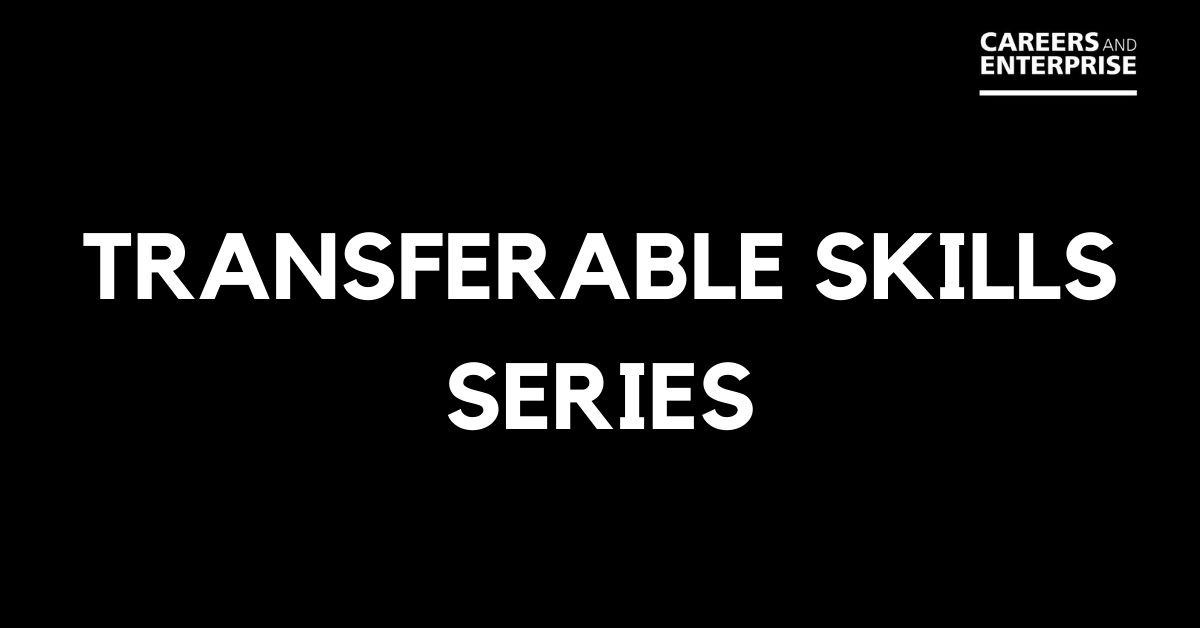Now, I know what you’re thinking – creative thinkers end up in creative industries, right? Artists, musicians, filmmakers, that kind of thing. Well, not always. While that may seem the obvious route, there are plenty of ways for creatives to apply their talents in pretty much any job you can think of.
The key to creativity is thinking outside of the box and reimagining the everyday, and the everyday can be found everywhere.

Indeed lists making connections, asking questions, making observations, networking and experimenting as just a few examples of creative skills that come in handy in the workplace. Think about times you’ve done any of these – chances are you do some combination of them in every lecture and seminar you attend, without even thinking about it.
Why do I need creativity?
When you are inquisitive and look beyond the obvious, as well as being open-minded and not afraid of pushing boundaries, you’re able to make a tangible difference and help your team, department or company as a whole move forward. People, whether that’s colleagues, clients or other external connections, will want to work with you, opening the door to opportunities that could boost your career development.
Creativity is also an incredibly valuable skill to have if you’re looking to move into a management or leadership role, as leaders who have creative and innovation skills are more likely to inspire and motivate others, leading to better results.
Looking to the future, creativity is expected to become even more lucrative in a world in which AI and automation are taking over most process-orientated tasks. Currently no robots with creative skills exist, so there’s a huge demand for people who do possess them in all areas of work.
I’m not very creative, what can I do about it?

There are five key ways in which you can develop your creativity.
1. Brainstorm
Brainstorming is all about generating as many ideas as you can within a short period of time. Brainstorming sessions are often done in group settings to get as many people’s inputs as possible, but it’s also something you can do by yourself.
The key is divergent thinking: this means looking at an issue or question from many different angles and coming up with multiple different ideas and answers, while withholding judgement. Only start evaluating your ideas once you can’t think of any more. By not restricting your thinking, there’s more space for truly creative and innovative ideas to come to the foreground.
2. Give your mind a break
Your brain needs space to be creative, so taking regular breaks is incredibly important in keeping your creative juices flowing.
Try pulsing: this means you work for a certain amount of time, maybe 50 or 90 minutes – depending on what works for you, and then take a short five to ten minute break in which you do something completely different: perhaps that’s grab a coffee, have a chat with a colleague or read an article. It allows your brain to recharge, making it easier for inspiration to spark.
3. Be curious & keep learning
Being curious, wanting to learn and understand new and different things is often a catalyst for creativity. There’s a scientific explanation behind this: when you do or learn something new, your brain creates new neural pathways that can help you come up with new ideas and perspectives.
4. Make small changes to your routine
Small changes can be just as effective in giving your brain a creative boost, so try switching up your daily routine from time to time. This could mean anything from signing up for a yoga class instead of going for your evening run, to trying out a new recipe for lunch, or taking a novel approach to team meetings.
Switching up your working environment can spark creativity too. If you’re stuck on something or not feeling particularly productive, you could go for a short walk, really taking in the surroundings. If that doesn’t work, try moving to another spot altogether to work.
5. Be brave & resilient
Nothing hampers creativity like the fear of failure. One of the best ways to overcome it is simply to dive right in and start working. For example, if you have to write an extensive paper or report, don’t let the fear of what you haven’t written yet hold you back and just start putting pen to paper.
Inspiration will come as you get in the flow. Remember it doesn’t have to be perfect on the first go either; you can also go back and make changes.
Lastly, you have to be resilient. Sometimes coming up with an idea is easy but bringing it to fruition can be a challenging journey. So, stay committed to your goal, be optimistic, find ways to deal with stress, focus on the things you can change and let go of those you can’t.
Conclusion
Being creative is oftentimes a matter of believing in yourself and your ability to do so. Too many people believe they’re ‘just not creative’ but the reality is that most people are, and in more ways than one. Look back and acknowledge your creativity in what you already do. For example, in the way you:
✅Solve problems
✅Rethink processes
✅Write a blog
✅Put a playlist together
✅Create a home video
✅Come up with inventive recipes
These activities are all fertile ground for creativity and examples you can cite as evidence of your skills. To learn more about making your creativity shine through in job hunting, visit the Careers Hub, where you can find all sorts of resources including CV 360, the Cover Letter builder, and AI mock interviews, which will help you weave it into each part of the recruitment process. You can also book a 1-1 appointment with our Careers Advisers for further personal support.
 Careers and Enterprise Blog
Careers and Enterprise Blog Abbie-Rose Rigden
Abbie-Rose Rigden 1904
1904


